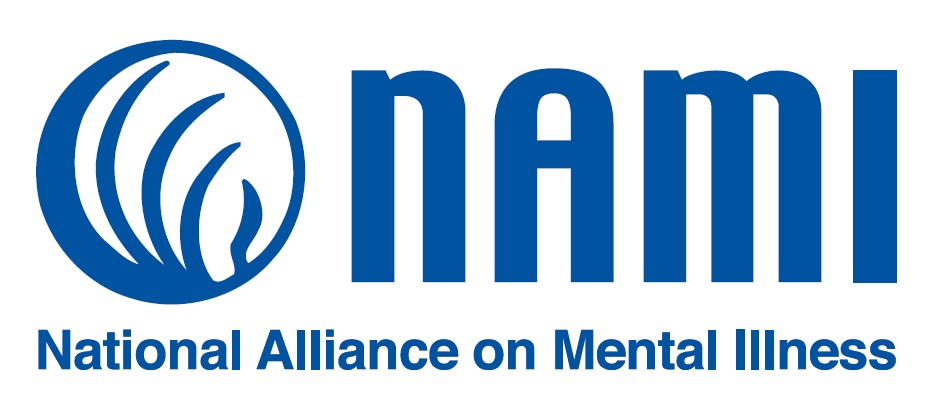- Pediatric Answers
- Posts
- Talk to Your Child About Suicide
Talk to Your Child About Suicide
Suicide Awareness month. What I'm seeing at work. Save $129 on a follow-up visit. Recalls on sound machines, swings, strollers. What is sex?

The first newsletter of every month is yours for free! After that, access all my newsletters with a premium subscription. To enjoy complete access to all content—both past and upcoming—click here for a 30-Day FREE TRIAL!
What's Inside

How to Talk to Your Child About Suicide
A while back, I had a parent approach me with a question. One of the child’s friends had just committed suicide. The question was:
“How do I talk about suicide without introducing the idea into my own child’s mind?”
Don’t be afraid to talk, you won’t plant the idea of suicide.
The short answer to that parent’s question is to just talk. Don’t be afraid to discuss suicide—all aspects. People are always surprised to find out that the scientific evidence states that talking about suicide does not increase a child’s risk. It does not introduce the idea. If a child was contemplating or toying with the idea of suicide, the conversation is often a welcome relief. If anything, talking about it may prevent it. If the child had no thoughts of suicide before, the child may simply struggle with trying to understand why anyone would do that (not make them do it).
When one suicide happens, watch out for more to come.
While talking about it won’t increase your child’s risk (or introduce the idea), the actual act of another kid committing suicide will increase your kid’s risk. In the educational arena, when there is one suicide, often more follow. The kid who may have been considering suicide is enticed by the attention surrounding the one who did commit suicide. Unfortunately, sometimes that is all that is needed to motivate a kid to complete the act. Consequently, there is usually increased school counselors and support following a suicide.
Suicide quick facts
A recent survey of high school students showed that 60% of them had thought about killing themselves, while 9% had tried at least once. That’s nearly one out of every 10 students who have tried! Suicide is the third leading cause of death in persons 15-24 years old and the fourth leading cause of death in ages 10-14. Wow, only 3 other causes kill 10 year old’s more than suicide. That’s tragic. FYI, firearms are used in half of completed suicides (in the 15+ age group). Firearms in the home are associated with higher suicide risk. Firearm attempts are usually lethal. Pill ingestions are the number one method of attempt overall. These facts are according the American Academy of Pediatrics.
What should a parent do?
Talk to your kid, especially if there has been an exposure. Don’t assume your “perfectly well-adjusted child” is ok. Ask about your child’s take on the situation. Did your child know the deceased? What does your child know of the reasons? What does your child think of all of it? Your child’s answers will help you gauge how worried you need to be (or not need to be). If there is any doubt in your mind whether or not your child is ok, seek the advice of a professional. Take suicide seriously.
Talking tips:
Listen
Use specific words, like suicide
Express love
Don’t be dismissive
Don’t get angry
(If you suspect suicidal thoughts—seek immediate help)
It makes my heart sick when I hear about suicide. As a medical community, neighbors, friends, adults, I feel like we’ve all failed our young ones when they don’t see another way out of their problems. Hopefully by talking about it and increasing our awareness we can help prevent more youth from committing suicide.
A great resource
We have a national Suicide and Crisis Lifeline you can access by dialing 988 or chat at 988lifeline.org. If you or your child are experiencing any suicidal tendencies, don’t be afraid to call or chat. This is an awesome resource for all of us.
You should also check out the info from NAMI:

Fact Or Fiction: Just Looking for Attention?
If a person is talking about suicide, it probably means they’re just looking for attention.

FALSE
From the Mayo Clinic:
People who die from suicide have often told someone about not wanting to live anymore or they do not see the future. It's always important to take seriously anybody who talks about feeling suicidal. It's important to be kind and sensitive, and ask direct questions such as: "Are you thinking about hurting yourself?" "Are you thinking about suicide?" or "Do you have access to weapons or things that can be used as weapons to harm yourself?"

What I’m Seeing at Work: ADHD!

While it isn’t contagious, there has been a huge uptick in appointments for ADHD since school has started. Many kids come off of their medications in the summer and once school is in full swing, it often becomes apparent that they need their medications again.
How do you know if your child has ADHD and could potentially benefit from medication? The child needs to meet all of the following criteria:
The child has to have symptoms (e.g., trouble paying attention, hyperactive, impulsive)
The problems have to be in 2 or more major settings (e.g., school, home, work). It’s not ADHD if your child won’t listen to you, but listens to the teacher.
The symptoms must cause academic or social impairment. A straight ”A” student doesn’t meet the definition of “academic impairment” even if he/she has trouble paying attention.
Note: Just because your child has ADHD does not mean you have to medicate. While medication can be very helpful in kids with ADHD, it’s not the only option and is certainly not free from side effects. Whether to medicate is a tough decision for most parents and one I suggest you have together with your doctor.
Pro Tip: Your child with ADHD may qualify for extra resources from the school (e.g., an IEP or 504). These could include things like special education services, testing accommodations, or classroom accommodations like sitting in the front of the class. It’s worth asking the school admin about it.


Money-Saving Tip: Save $129 On Follow-ups
If you have a procedure done (e.g., stitches or a broken arm casted), the follow-up appointment is at no cost as long as it’s with the same provider. This includes post-surgical visits, complications, or follow-up care. It’s part of “global care,” meaning the doc can only bill once for it.
Depending on the procedure, the “global care” time frame varies (typically 14 to 90 days). So, if the doc puts the stitches in he/she has to take them out for free.
Bottom line, make sure the same doctor who did the procedure is the one to handle the follow-up.
The crummy situation is when the original problem happened far from home. In the case of stitches, let’s say it happened while on vacation in another state. Ten days later and now at home, you need them removed. Now your regular pediatrician can charge for the visit. It’s a double whammy.
COST SAVINGS: $129

WWWD: How I Treat Bloody Noses
I often joke that if it weren’t for my profession, we’d be at the doctor’s office weekly with one of our four kids. I use my skills at home all the time. Here, I’ll share a recent example from home and how I handled it, including the products I used. This isn’t an advertisement—I don’t have any financial interest in these products. I simply have parents ask me all the time about what to do in certain situations and the products I use.

Scenario: Two of my kids have had a total of 6 bloody noses between them this week.
The weather is changing, we live in a desert (super dry air=more bloody noses), and we’re 5000 feet above sea level. It’s the perfect set up for bloody noses. Here’s what I did:
Pinch the end of the nose tight. Apply pressure to where the blood is coming from. Do not pinch the bridge of the nose (this is an old wives' tale).
On a real gusher, you can also apply a cold pack where you are pinching (or slightly above since your hand is in the way from pinching). The cold will make the blood vessels constrict and slow the bleeding.
Hold until the bleeding stops. If you check and it’s still bleeding, hold it twice as long as previously (e.g., if you checked after 5 mins and it’s still bleeding, hold for 10 mins before checking again).
Do not blow out or pick out newly formed clots. This will just make the nose bleed again.
Don’t tip your head back or lay down with bloody noses. The blood will drain down the throat into the stomach, which is nauseating. Instead, sit straight up or lean slightly forward and spit out any blood in the back of the throat.
Pro Tips: Prevent bloody noses (or treat recurrent ones) by using a Q-tip to apply a dime sized glob of Vaseline (or Aquaphor) up the nose. Make sure and rub it all around. Apply just before bed when it can sink in and heal all night. Applied during the day, the Vaseline will warm up and just run out the nose, which is totally irritating.

Recalls & Alerts: Sound Machines, Infant Swings, Twins Strollers

Funny Things: What Is Sex?

I was talking with a teen in the office not long ago. As part of my regular exam, I always ask if the teen is sexually active. This is how it went:
Me: And are you sexually active?
Teen: (A little confused) No.
Me: Do you know what sex is?
Teen: Ummmm, no.
A good reminder to talk to our kids about sex.

Legal Disclaimer: The information provided in this article is for educational and informational purposes only. It is not intended as a substitute for professional advice or medical treatment. Always seek the advice of your physician or qualified healthcare provider with any questions you may have regarding a medical condition or the health and welfare of your child. We do not endorse any specific products or brands mentioned in this article. Readers are encouraged to perform their own research and consult with appropriate professionals before making any decisions based on the information provided herein.




